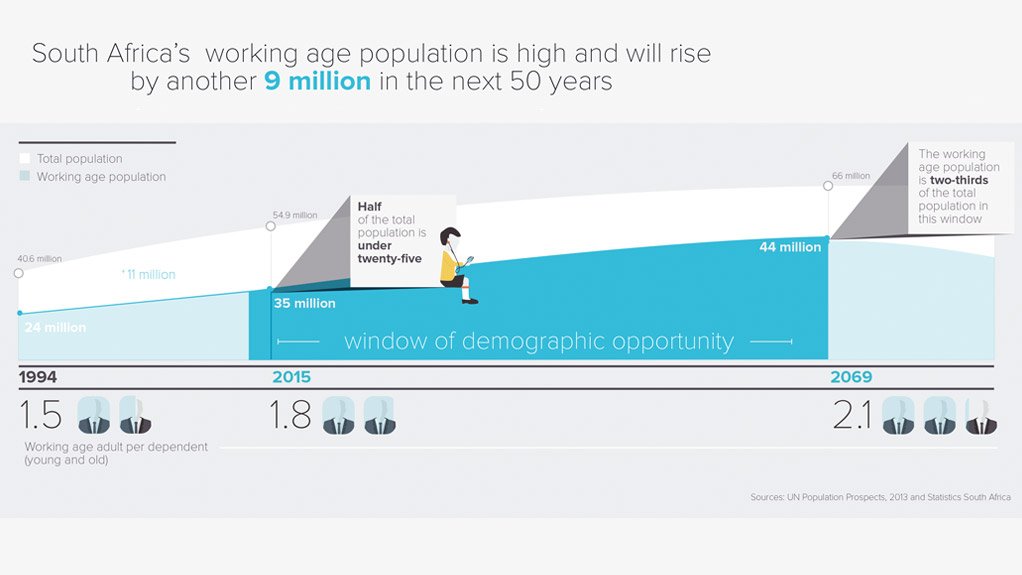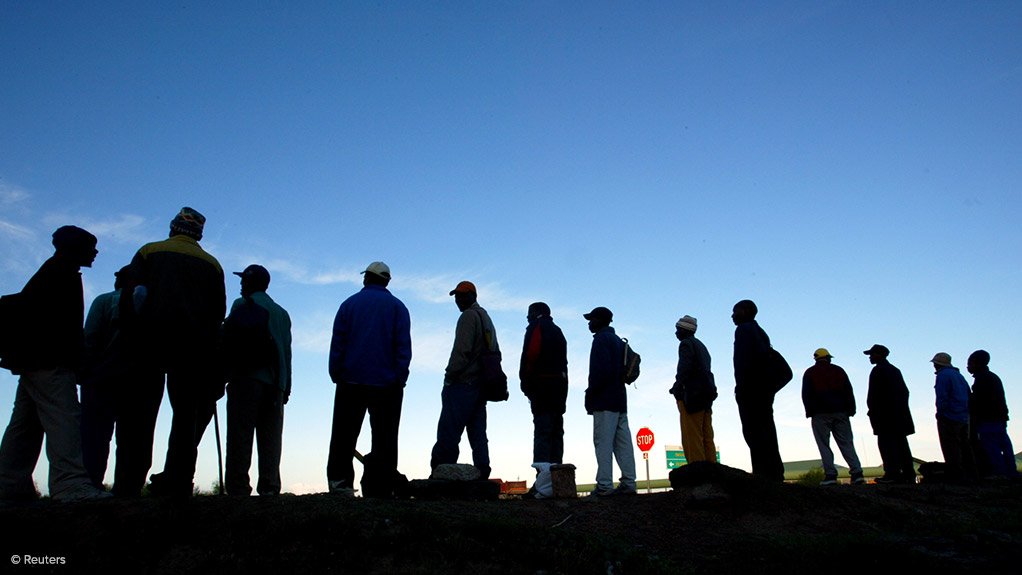Window still wide open for South Africa to reap demographic dividend – World Bank
While delivering a downbeat assessment of South Africa’s immediate economic prospects, a new World Bank study argues strongly that the window of opportunity remains open for South Africa to take advantage of its “demographic dividend”, with the country’s working-age population set to rise by a further nine-million people over the coming five decades.
At present 35-million of South Africa’s 54.9-million people are aged between 15 and 64, with 11-million people having entered the working-age category since 1994. But in its latest South Africa Economic Update, the World Bank estimates that this demographic shift is still far from over and that, by 2069, two-thirds of the country’s 66-million-strong population, or 44-million people, will still be of working age.
In other regions, particularly East Asia, this population dynamic has been a significant factor in raising growth and improving living standards, with China’s demographic opportunity estimated to have contributed one-quarter of the country’s cumulative real per capita gross domestic product (GDP) growth between 1982 and 2000.
If fully tapped in the case of South Africa, the World Bank believes growth could average 5.4% between 2015 and 2030, which would be sufficient to double per capita income and all but eliminate extreme poverty over the period. Unemployment, meanwhile, would fall to just 5.8%, from over 25% currently.
But World Bank programme leader Catriona Purfield stresses that benefits will not flow automatically, as evidenced already by the fact that South Africa’s unemployment rate has remained stubbornly high, despite its demographic potential over the past 21 years.
The country’s inability to create jobs, together with a mismatch between educational outcomes and the needs of private employers for higher-skilled workers, has also left many young South Africans outside of the formal economy. Two-thirds of the 5.2-million people currently unemployed are aged between 15 and 34.
Forty per cent of all those who are unemployed are new entrants to the job market, while 60% do not have a matric qualification, with the lower-skilled employment sectors of mining, agriculture and manufacturing having shed jobs over the past number of years.
“Unemployment is now higher than it was at the end of apartheid, with almost one-third of the labour force out of work or discouraged. At a time when almost half the population is under 25, unemployment among the young (15–24) is almost 50%, double the national rate.”
For South Africa to take greater advantage of its demographic position, the World Bank urges it to combine a more labour-intensive economic growth trajectory with improved educational outcomes and faster labour productivity growth.
Purfield believes improving the quality of basic education should be a top priority so as to ensure that school leavers and graduates have the foundational skills necessary to function in the modern workplace. Steps were also needed to scale up technical and vocational education and training opportunities.
FACING HEADWINDS
The bank’s immediate prognosis for the South African economy is also far less upbeat.
During a strike-afflicted 2014, the country grew by only 1.5% – a rate that fell behind population growth, resulting in real GDP per capita declining by 0.4%.
The bank’s 2015 and 2016 forecasts have also been lowered by 0.5 and 0.8 of a percentage point respectively to 2%, owing to a sharp fall in commodity prices, ongoing power instability and weak domestic demand. It only expects growth to reach 2.4% in 2017, which is when new electricity supply is expected to come online.
The risks are also heavily weighted towards the downside, with the bank particularly concerned about the implications for South Africa of the slowdown in China and the precipitous decline in some commodity prices.
On average metal prices have fallen by more than 40% from their 2011 highs, while South African exports have failed to react to the 50% decline in the value of the rand against the dollar over the past two years, possibly as a result of power and labour instability.
“It’s key in the near term to address these infrastructure bottlenecks so that South Africa is in a better position to take advantage of the depreciation of the rand,” Purfield says, adding that the prospects for exports could also be materially improved if the barriers to inter-regional trade are alleviated for both goods and services.
Comments
Press Office
Announcements
What's On
Subscribe to improve your user experience...
Option 1 (equivalent of R125 a month):
Receive a weekly copy of Creamer Media's Engineering News & Mining Weekly magazine
(print copy for those in South Africa and e-magazine for those outside of South Africa)
Receive daily email newsletters
Access to full search results
Access archive of magazine back copies
Access to Projects in Progress
Access to ONE Research Report of your choice in PDF format
Option 2 (equivalent of R375 a month):
All benefits from Option 1
PLUS
Access to Creamer Media's Research Channel Africa for ALL Research Reports, in PDF format, on various industrial and mining sectors
including Electricity; Water; Energy Transition; Hydrogen; Roads, Rail and Ports; Coal; Gold; Platinum; Battery Metals; etc.
Already a subscriber?
Forgotten your password?
Receive weekly copy of Creamer Media's Engineering News & Mining Weekly magazine (print copy for those in South Africa and e-magazine for those outside of South Africa)
➕
Recieve daily email newsletters
➕
Access to full search results
➕
Access archive of magazine back copies
➕
Access to Projects in Progress
➕
Access to ONE Research Report of your choice in PDF format
RESEARCH CHANNEL AFRICA
R4500 (equivalent of R375 a month)
SUBSCRIBEAll benefits from Option 1
➕
Access to Creamer Media's Research Channel Africa for ALL Research Reports on various industrial and mining sectors, in PDF format, including on:
Electricity
➕
Water
➕
Energy Transition
➕
Hydrogen
➕
Roads, Rail and Ports
➕
Coal
➕
Gold
➕
Platinum
➕
Battery Metals
➕
etc.
Receive all benefits from Option 1 or Option 2 delivered to numerous people at your company
➕
Multiple User names and Passwords for simultaneous log-ins
➕
Intranet integration access to all in your organisation






















